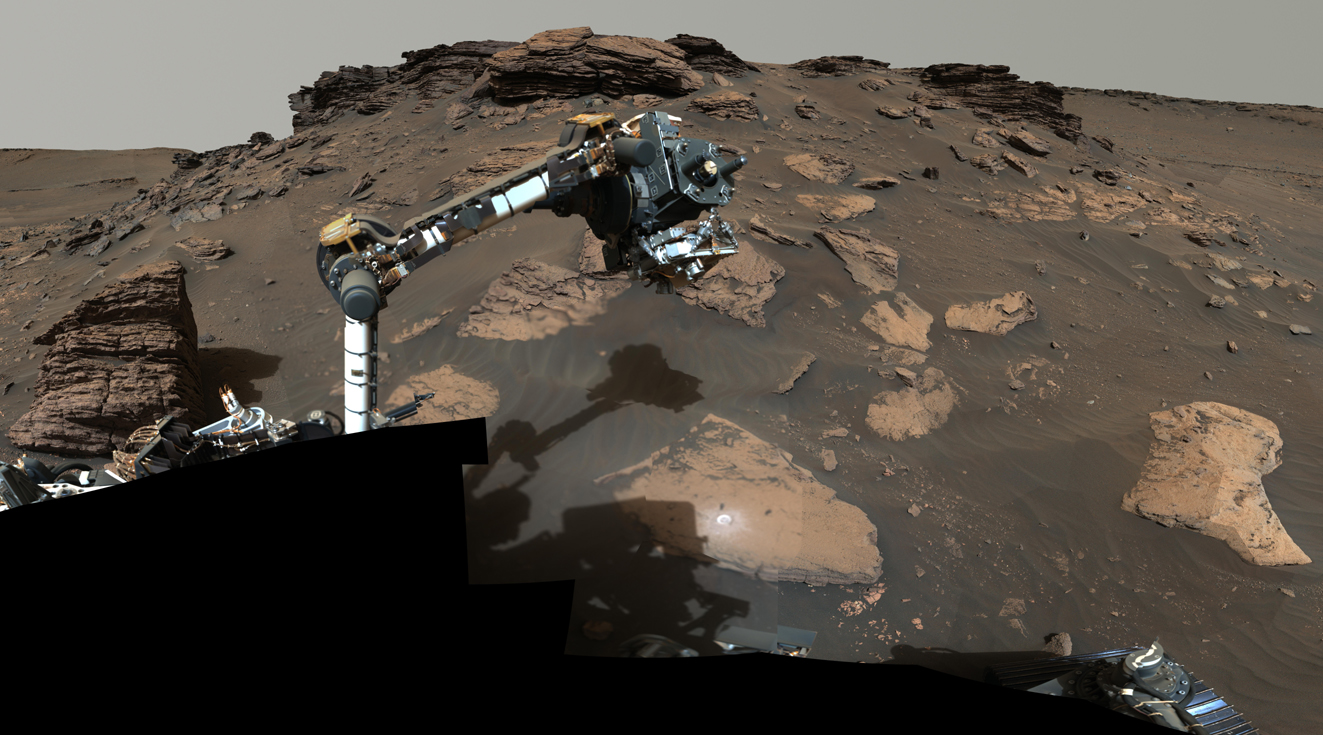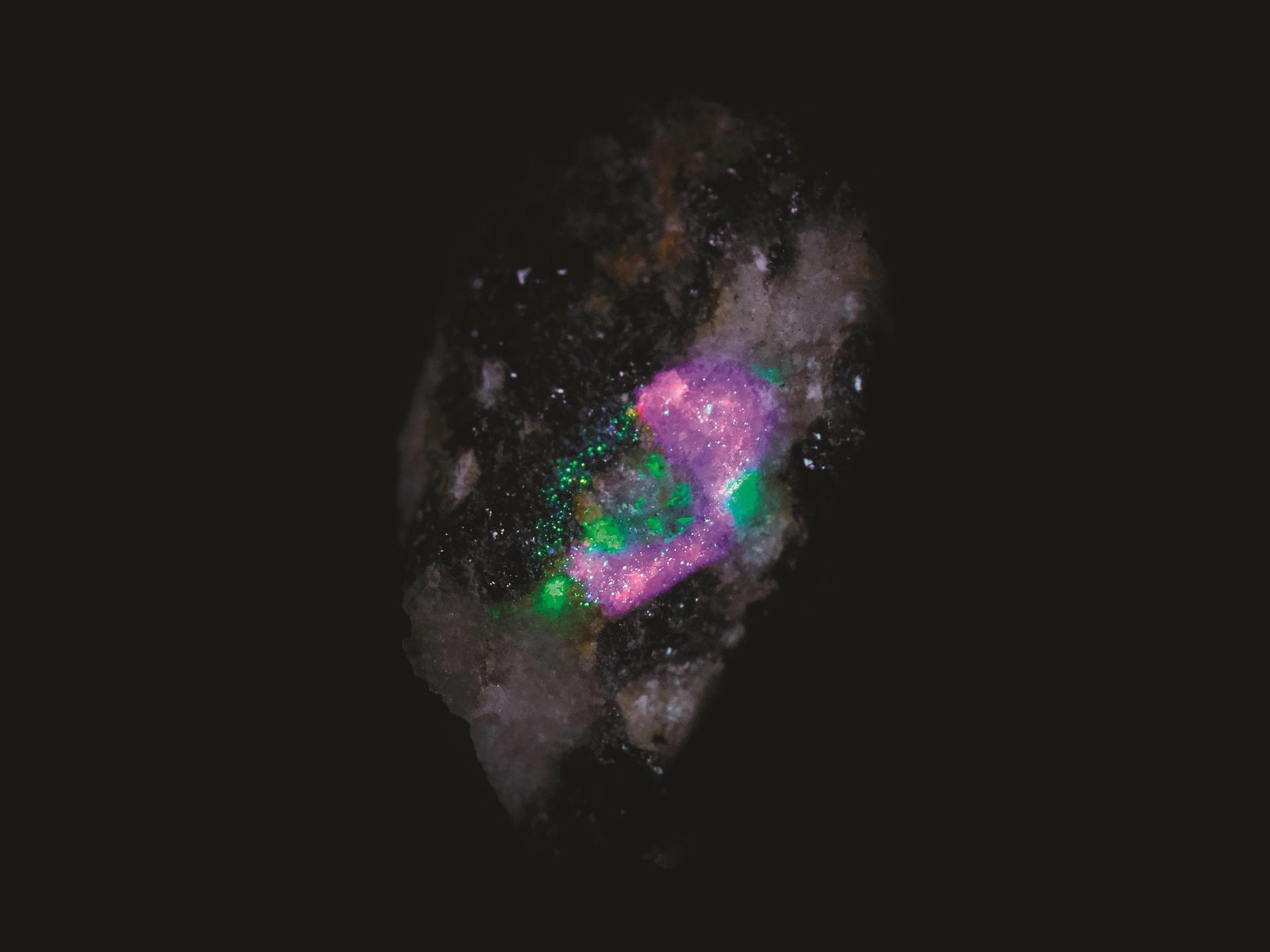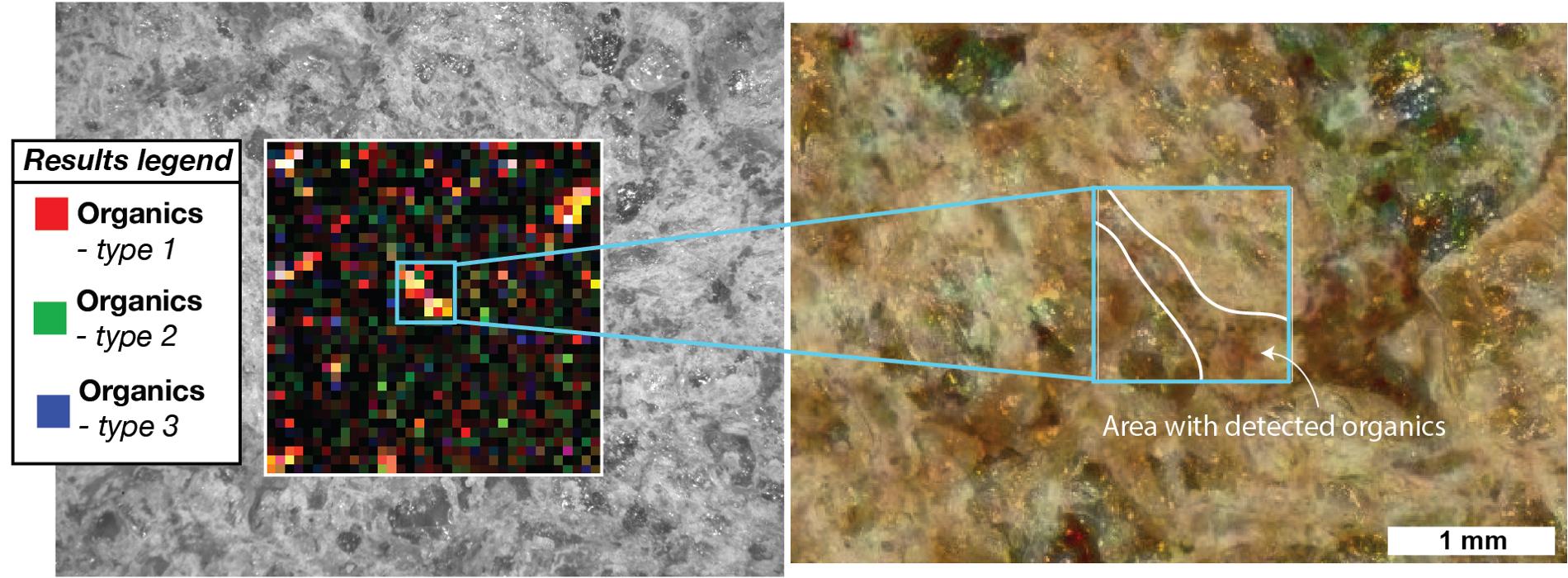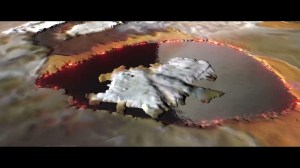A cutting-edge instrument called SHERLOC, which hunts for molecules potentially related to ancient life, played a key role in a recent study.
In its first 400 days on Mars, NASA’s Perseverance rover may have found a diverse collection of organics – carbon-based molecules considered the building blocks of life – thanks to SHERLOC, an innovative instrument on the rover’s robotic arm. Scientists with the mission, which is searching for evidence that the planet supported microbial life billions of years ago, aren’t sure whether biological or geological sources formed the molecules, but they’re intrigued.
Short for Scanning Habitable Environments with Raman & Luminescence for Organics & Chemicals, SHERLOC helps scientists decide whether a sample is worth collecting. This makes the instrument essential to the Mars Sample Return campaign. The Perseverance rover is the first step of the campaign, a joint effort by NASA and ESA (European Space Agency) that seeks to bring scientifically selected samples back from Mars to be studied on Earth with lab equipment far more complex than could be sent to the Red Planet. The samples would need to be brought back to confirm the presence of organics.
SHERLOC’s capabilities center on a technique that looks at the chemical makeup of rocks by analyzing how they scatter light. The instrument directs an ultraviolet laser at its target. How that light is absorbed and then emitted – a phenomenon called the Raman effect – provides a distinctive spectral “fingerprint” of different molecules. This enables scientists to classify organics and minerals present in a rock and understand the environment in which the rock formed. Salty water, for example, can result in the formation of different minerals than fresh water.
After SHERLOC captures a rock’s textures with its WATSON (Wide Angle Topographic Sensor for Operations and eNgineering) camera, it adds data to those images to create spatial maps of chemicals on the rock’s surface. The results, detailed in a recent paper in Nature, have been as promising as the instrument’s science team had hoped.
“These detections are an exciting example of what SHERLOC can find, and they’re helping us understand how to look for the best samples,” said lead author Sunanda Sharma of NASA’s Jet Propulsion Laboratory in Southern California. JPL built SHERLOC along with the Perseverance rover.
NASA’s Curiosity rover, which landed on Mars in 2012, has confirmed the presence of organic molecules several times in Gale Crater, 2,300 miles (3,700 kilometers) away from Perseverance. Curiosity relies on SAM, or the Sample Analysis on Mars, an instrument in its belly that heats up powderized rock samples and performs a chemical analysis on the resulting vapor.
Because Perseverance’s scientists are looking for rocks that may have preserved signs of ancient microbial life, they want to leave the samples intact for closer study on Earth.
Getting to the Core
The new Nature paper looks at 10 rock targets SHERLOC studied, including one nicknamed “Quartier.”
“We see a set of signals that are consistent with organics in the data from Quartier,” Sharma said. “That grabbed everyone’s attention.”
When data that comes back from SHERLOC and other instruments looks promising, the science team then decides whether to use the rover’s drill to core a rock sample that’s about the size of a piece of classroom chalk. After analyzing Quartier, they took rock-core samples “Robine” and “Malay” from the same rock – two of the 20 core samples collected so far (learn more with the sample dashboard).
Picking out a good target to collect a sample from isn’t as simple as looking for the most organic molecules. Ultimately, Perseverance’s scientists want to collect a set of samples that’s representative of all the different areas that can be found within Jezero Crater. That breadth will provide context for future scientists studying these samples, who will wonder what changes occurred around any samples that might indicate signs of ancient life.
“The value comes from the sum rather than any individual sample,” Sharma said. “Pointillism is a good analogy for this. We’re eventually going to step back and see the big picture of how this area formed.”
More About the Mission
A key objective for Perseverance’s mission on Mars is astrobiology, including the search for signs of ancient microbial life. The rover will characterize the planet’s geology and past climate, pave the way for human exploration of the Red Planet, and be the first mission to collect and cache Martian rock and regolith (broken rock and dust).
Subsequent NASA missions, in cooperation with ESA (European Space Agency), would send spacecraft to Mars to collect these sealed samples from the surface and return them to Earth for in-depth analysis.
The Mars 2020 Perseverance mission is part of NASA’s Moon to Mars exploration approach, which includes Artemis missions to the Moon that will help prepare for human exploration of the Red Planet.
JPL, which is managed for NASA by Caltech in Pasadena, California, built and manages operations of the Perseverance rover.
For more about Perseverance:
Andrew Good
Jet Propulsion Laboratory, Pasadena, Calif.
818-393-2433
andrew.c.good@jpl.nasa.gov
Karen Fox / Alana Johnson
NASA Headquarters, Washington
301-286-6284 / 202-358-1501
karen.c.fox@nasa.gov / alana.r.johnson@nasa.gov
2023-099
































